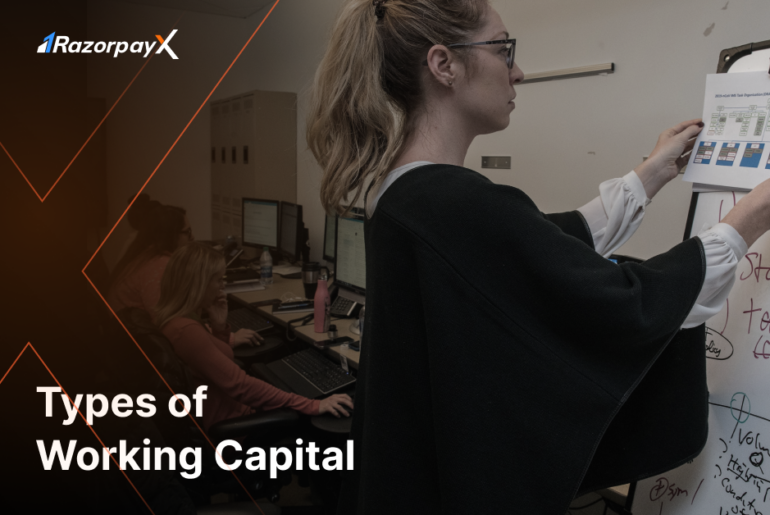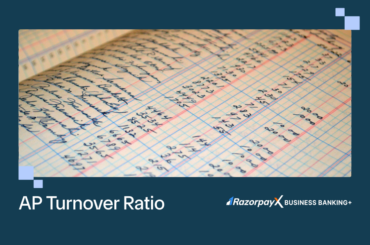Working capital is the liquidity available to a company to carry out its day-to-day expenses. Two fundamental elements of business affecting working capital are current assets and current liabilities. The short term financial position of a business can be determined by analysing these two metrics.
There are many types of working capital depending on its value and periodicity. It helps in allocating cash, inventories, and accounts receivable and payable better.
Table of Contents
What is Working Capital?
Working capital is the difference between the current assets and liabilities of a company. This difference projects how much capital is available to a company to meet its regular needs. To calculate the working capital of a business, use this equation:
Working Capital = Current Assets – Current Liabilities
Also read: Understanding Changes in Working Capital Formula
Types of Working Capital
1. Permanent Working Capital
It is the minimum working capital a business requires to operate and cover all its liabilities. In other words, it is the least amount of current assets required to run a business. The amount of permanent working capital required depends on the growth of the business. If the business grows, it will have more liabilities. Thus, the business will need a much higher working capital.
This capital further divides into two types of working capital:
- Regular Working Capital: It includes the minimum capital required for a business to cover all its day-to-day business operations costs. Regular working capital includes salaries, wages, maintenance and overhead expenses. Businesses need to maintain regular working capital to ensure smooth and stable operations.
- Reserve Margin Working Capital: Reserve Margin Working Capital is the amount of capital which companies reserve in addition to their regular working capital. Businesses uses it as emergency capital in case of unforeseen circumstances. The fund also acts as a contingency during unexpected market situations, opportunities or natural calamities.
2. Variable Working Capital
Variable working capital or fluctuating working capital is one of the types of working capital that businesses use as a temporary period investment. The amount of such capital changes depending upon the growth and size of the business.
There are two types of working capital in terms of variables:
- Seasonal Variable Working Capital: Businesses often need some extra amount of working capital to carry out its operation. At these times they borrow funds or take loans to meet their working capital needs. It is mainly common for seasonal businesses.
- Special Variable Working Capital: Businesses require special or supplementary working capital to undertake new operations or cope with unforeseen events. Thus, the special variable working capital is used for risk management, launching new products or financial marketing campaigns.
3. Gross Working Capital
It is the calculated total of a company’s current assets. Gross working capital does not involve the deduction of the company’s liabilities.
4. Net Working Capital
Net working capital is one of the most critical types of working capital one can estimate by deducting net current assets from net current liabilities. Businesses that have enough net working capital, have an increased possibility to grow into something big. Other than that, companies having negative or insufficient net working capital have higher odds to declare bankruptcy.
5. Negative Working Capital
Negative working capital refers to a financial situation where a company’s current liabilities exceed its current assets. In simpler terms, it means that a business has more short-term debts to pay off than the cash and assets readily available to cover those obligations.
Negative working capital can also signal potential challenges in meeting financial obligations and may require careful monitoring and proactive measures to ensure long-term stability.
Factors Determining the Requirement of Working Capital
- Type and Size of the Business
The amount of working capital a business requires depends a lot on the size and nature of trade. For example, trading companies require a huge amount of working capital as it stocks huge quantities of goods. Whereas, the working capital requirement for a manufacturing company is much lesser.
- Business Cycle
The business cycle also has a huge impact on the working capital needs of a business. Seasonal businesses require additional working capital to expand the business during seasonal booms.
Businesses also require working capital to meet the needs of increased sales. In such cases, they borrow money or take loans to fulfil the demand.
- Production Cycle
The production cycle or the operating cycle is the time it takes to produce the final product from raw materials. It has a huge impact on the working capital requirement of a company.
For example, businesses that have a longer production cycle need much more working capital to meet their operational needs. In other words, the increased production cycle is directly proportional to the need for the working capital of a company.
- Operational Efficiency
The operational efficiency of businesses depends on a lot of factors such as short production cycles, quick sales and shorter debt collection periods. Each business achieves this operational efficiency by managing its working capital.
Businesses that are operationally efficient need to invest less in working capital. Similarly, businesses that are not operationally efficient need to invest in working capital.
Did you know?
Razorpay is disrupting working capital loan processes for MSMEs through its collateral-free working capital loans . This product is designed to meet the short-term working capital requirements of MSMEs such as salaries, infrastructure overheads, procurement of raw materials and much more.
Read more:
FAQs
What are the three main components of working capital?
The most essential components associated with the working capital are Accounts receivable, accounts payable and inventory.
What are the most important elements of working capital management?
The most important elements of working capital management are cash, trade receivables, trade payables, short-term financing, and inventory.
What is the working capital ratio?
The working capital ratio is the division of total current assets by total current liabilities. Working capital ratio= Total current assets/total current liabilities
What is the ideal working capital ratio?
The ideal working capital ratio of a business is between 1.5 and 2.1.





